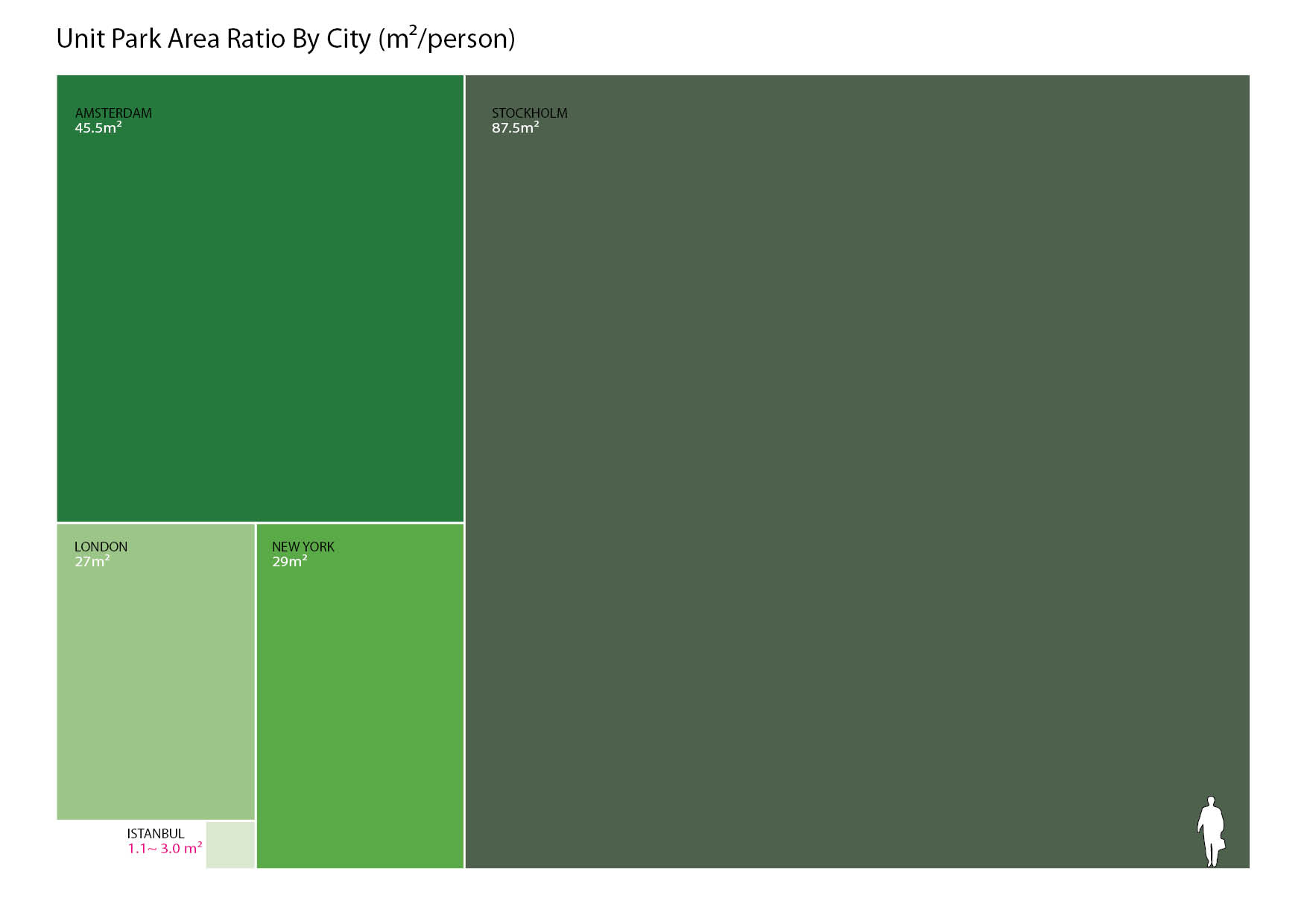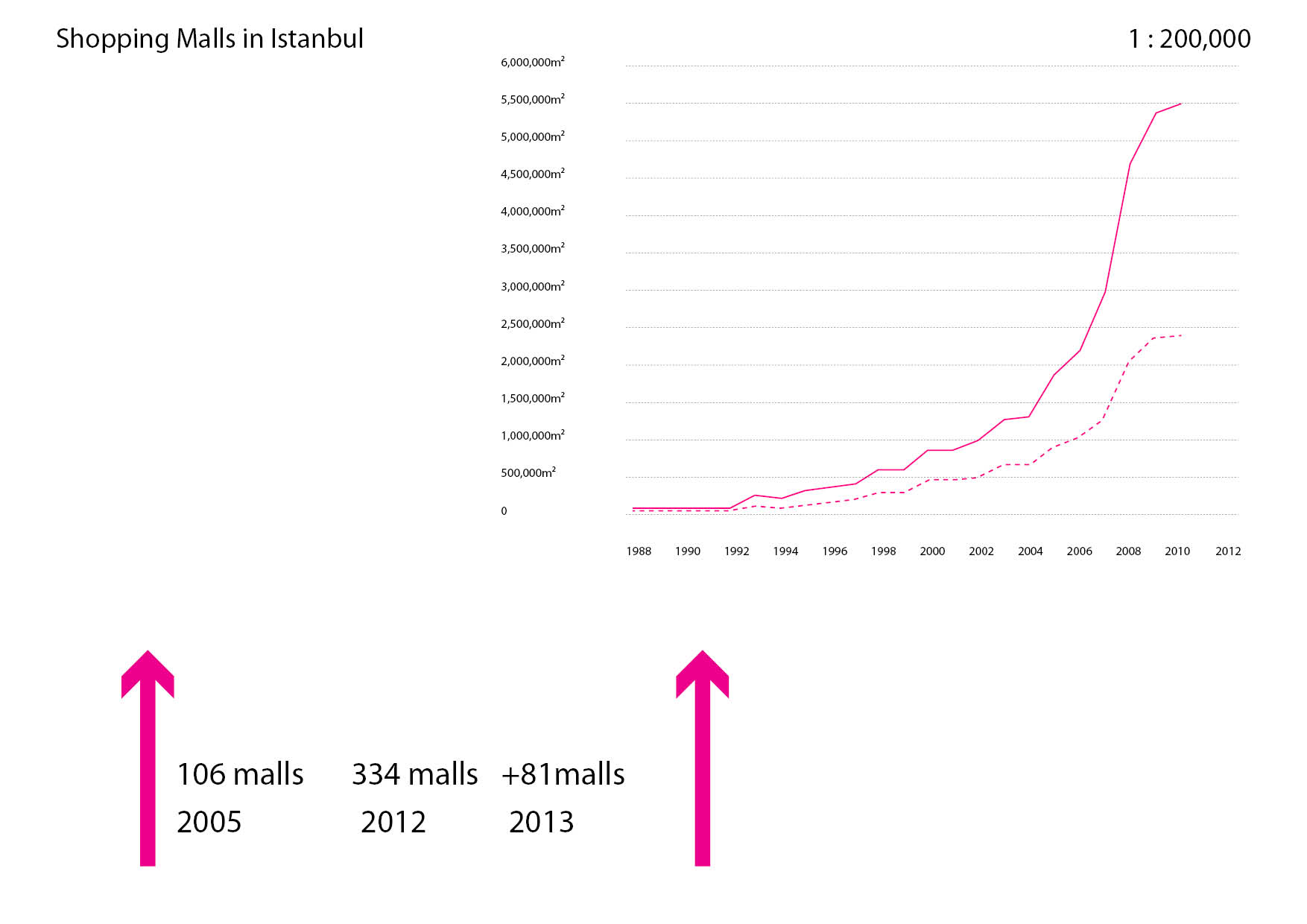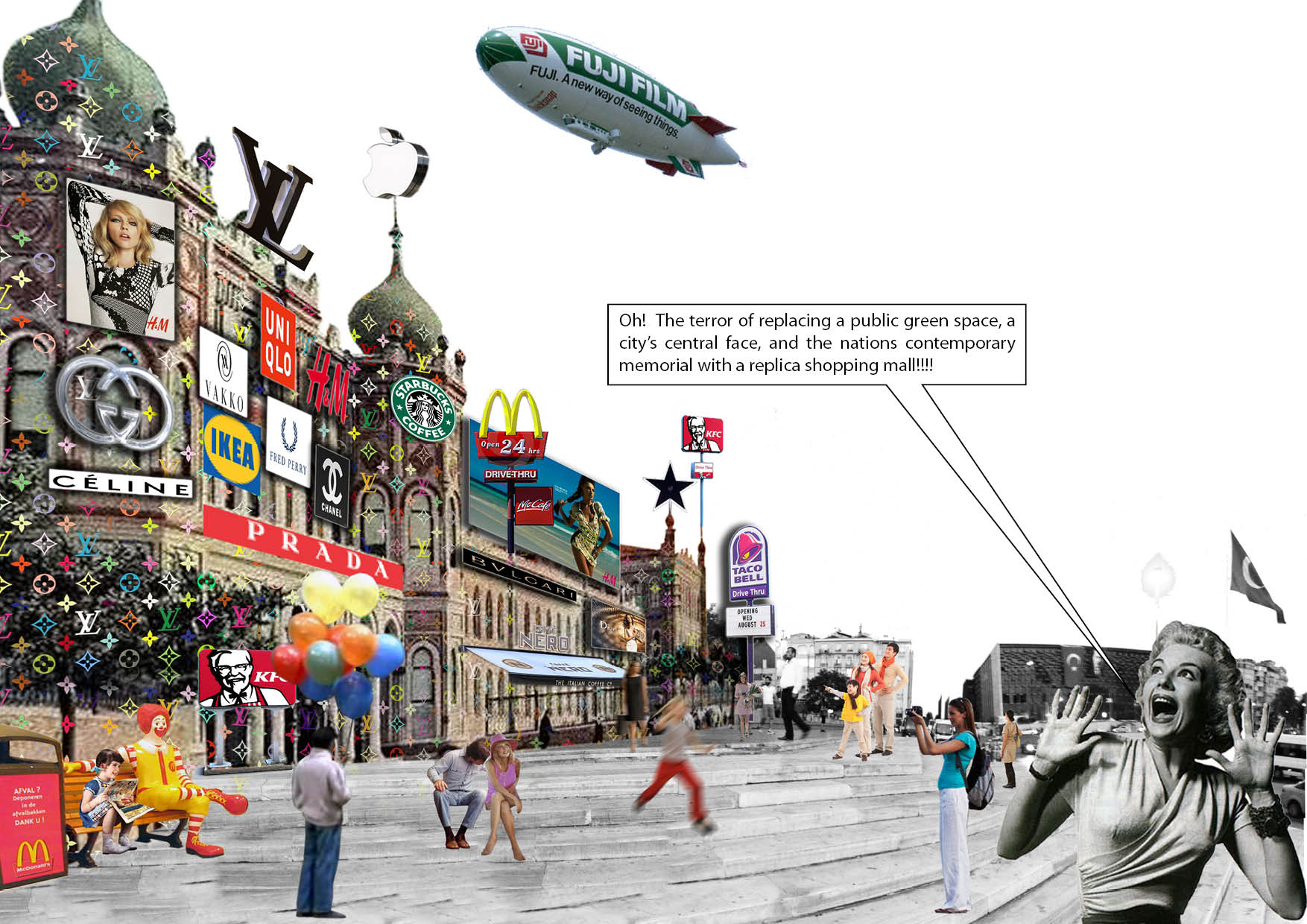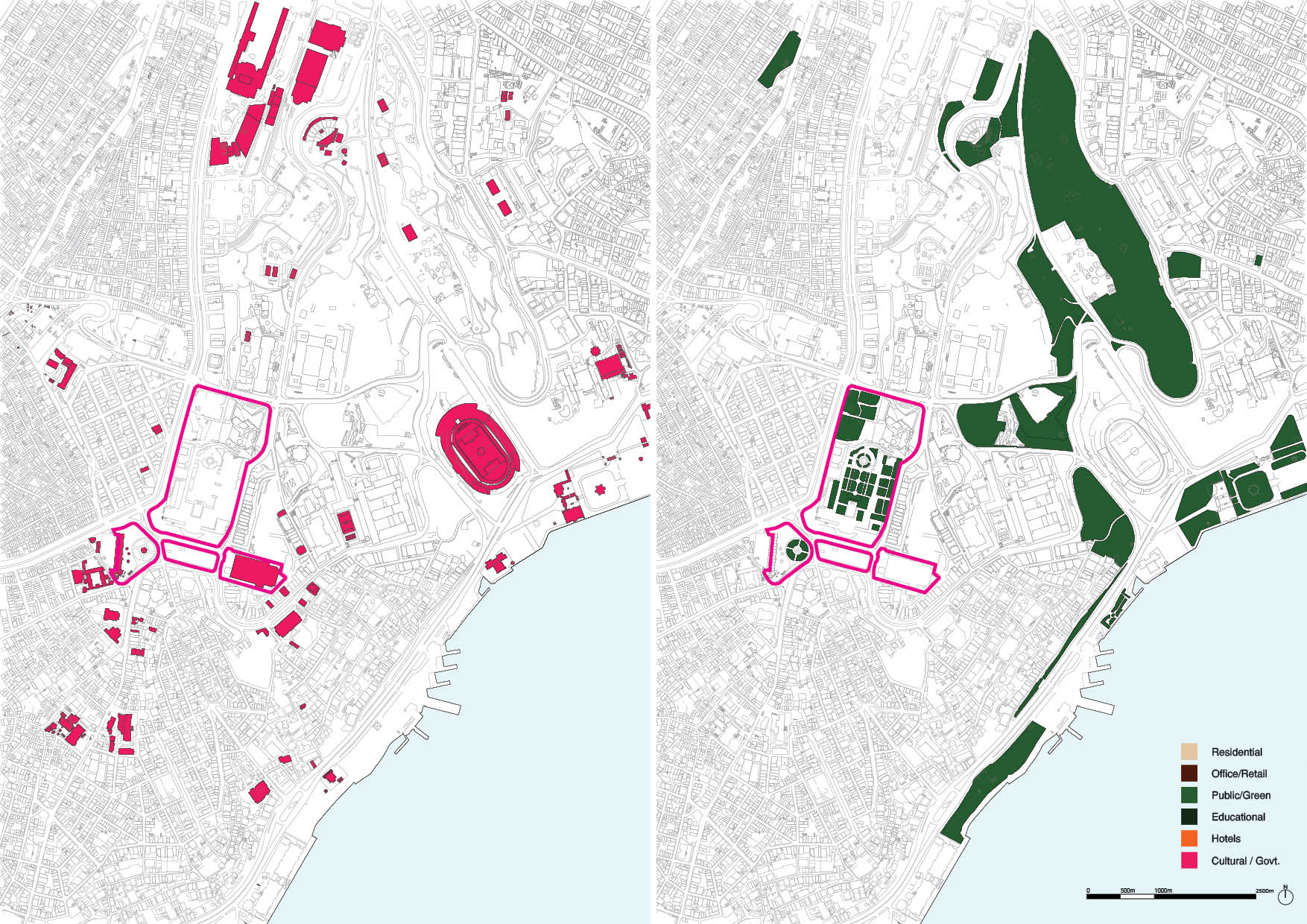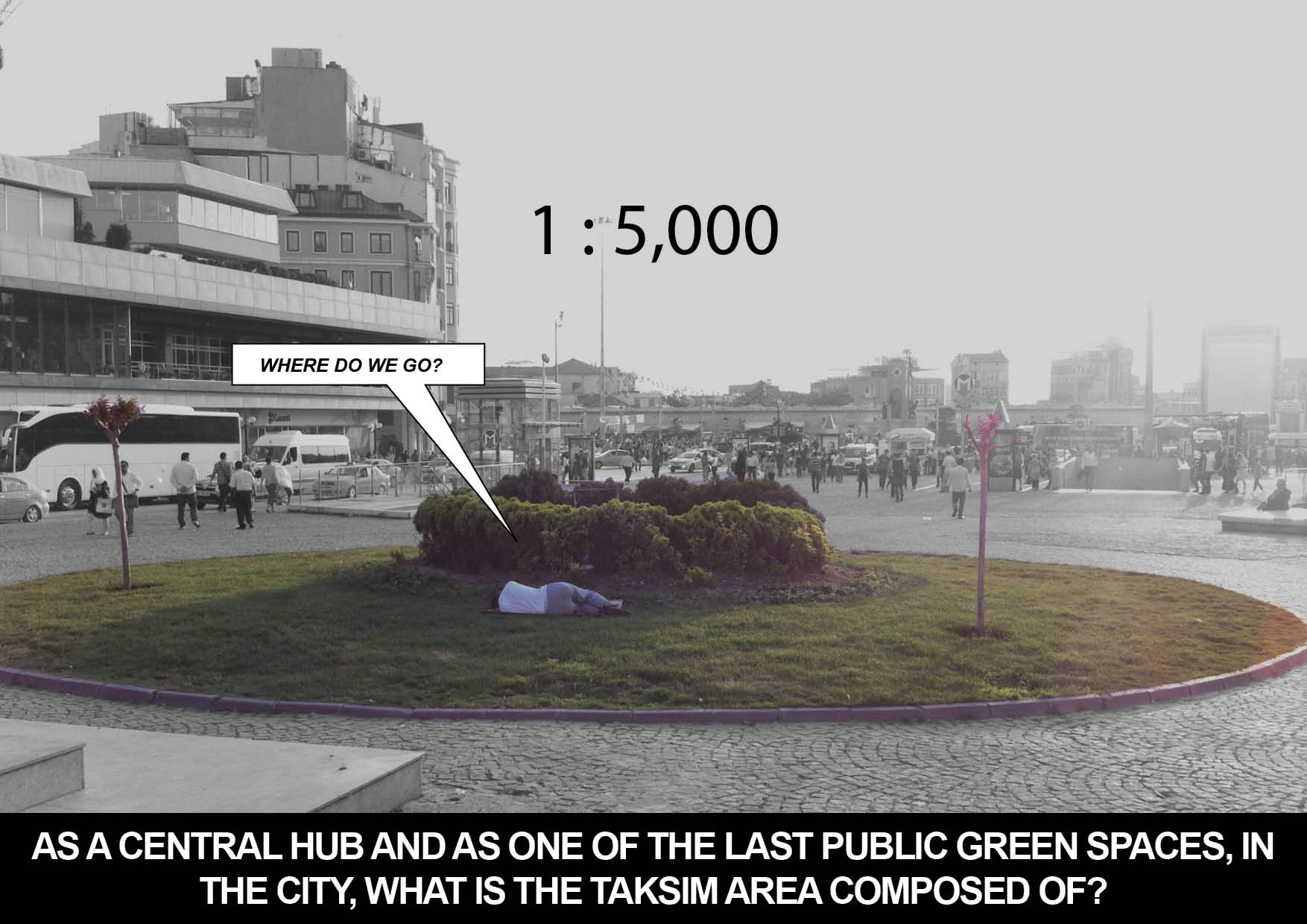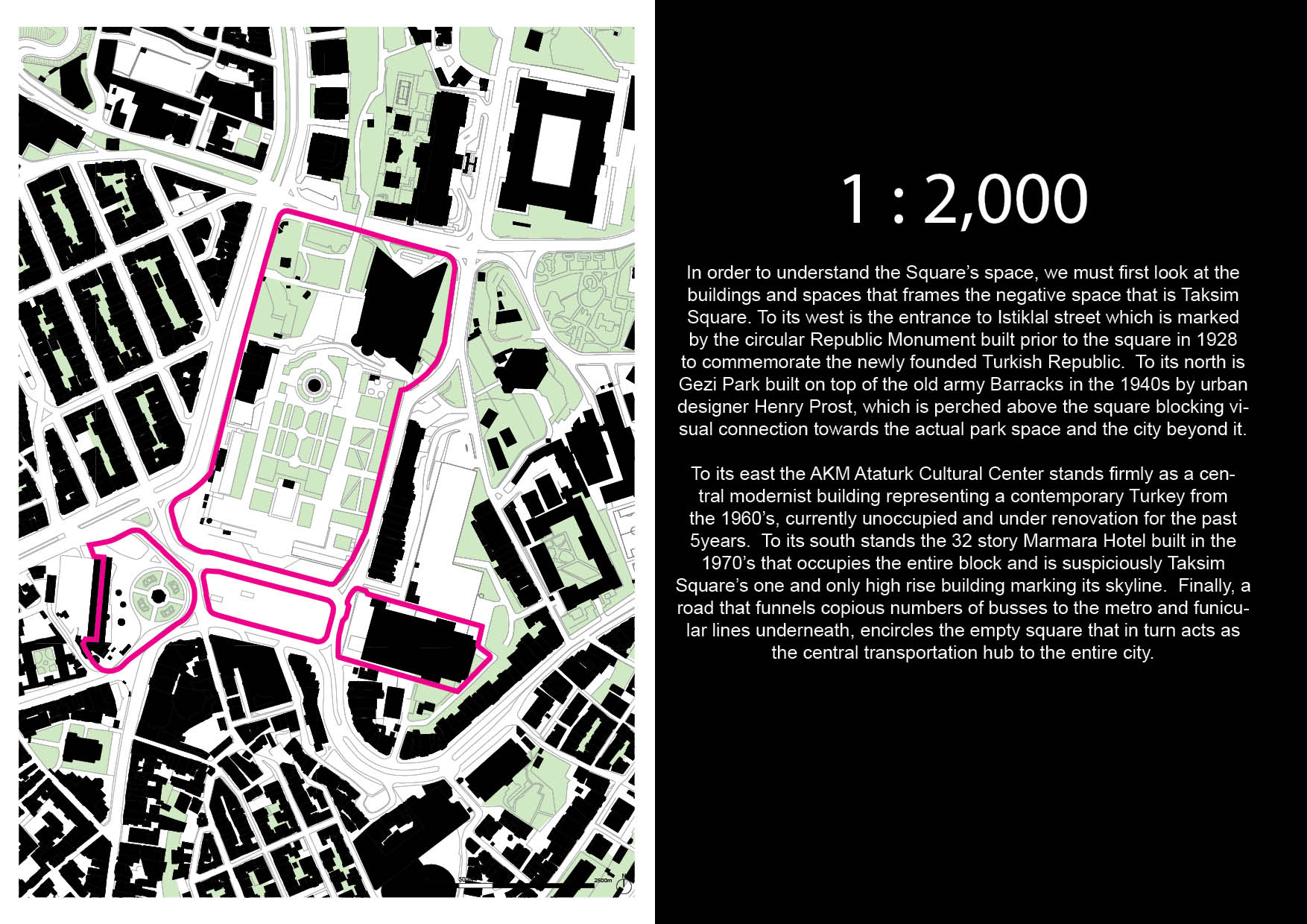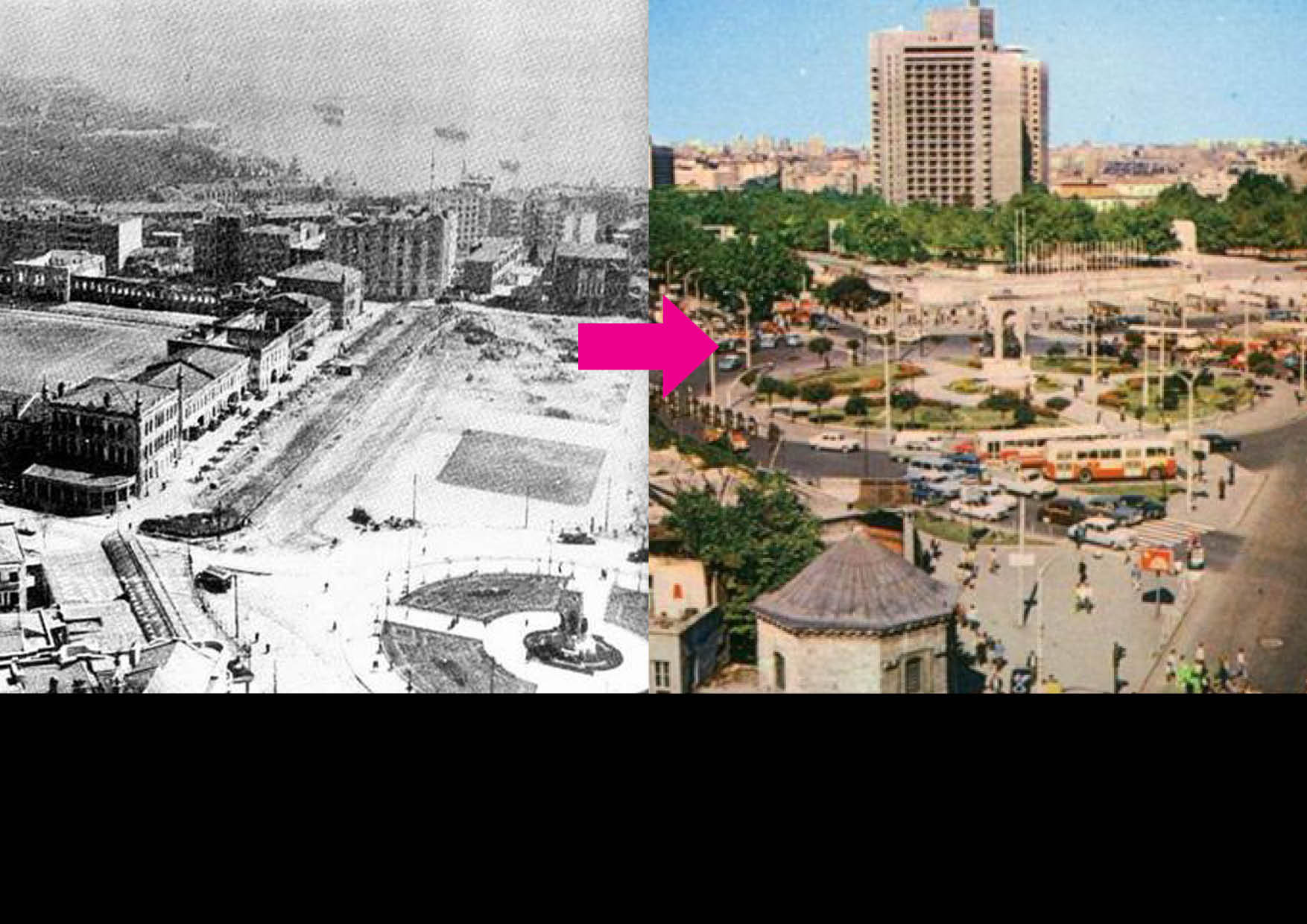At 1 : 20,000 scale, Taksim Square and Gezi Park appear as a speck of dust in comparison to the vast expanse of Istanbul. However, the significance of the square and park can be highlighted when mapping out key information from the city.
Transportation:
Divided by the Bosphorus Istanbul strides between two continents. While the city continues to grow as it supports the ever-increasing migrant population moving into the city, it can be seen that it is expanding outwards in reference to Taksim Square. Because Taksim Square is the central transportation hub that connects the metro, funicular, tram, bus, and ferry lines, the city develops in reference to it in order to be linked thru the public transportation with the rest of the city. It is the center of public commute as it hosts over a million commuters a day traveling across the city.
Parks:
Gezi Park stands as a modest size park at only 38,000m². While, this may seem an insignificant size when seen in the scale of the larger city, it is easily noticeable that it is one of the very few inner city parks that exist. To the naked eye, Istanbul appears very lush and green especially if you look at the vast rolling hills on the northern areas and along the Bosporus. However, according to the research by American Standards, there are 2470 recreational areas in Istanbul and the size of recreational area per one person is a mere 1.53 m².
Not only is this lower than the recommended 10sqm/person, it is significantly less In comparison to the major cities across Europe. Highlighted by the Unit Park Area Ratio where Istanbul’s 1.53 m²/person is belittling compared to the 27 m²/person for London, 45.5 m²/person for Amsterdam, and a whooping 87.5 m²/person in Stockholm. The European Green City Index also confirms that Istanbul needs to reconsider its environmental policies as it ranks 25th out of 30 European cities.
“Nowhere to escape in an earthquake-“
Kerem Ateş, the general secretariat for the Turkish Environmental and Woodlands Protection Society, or TÜRÇEK, said green areas in Istanbul were being marked for construction through rapid zoning changes in recent years.
"The green spaces of Istanbul are about to become extinct. Istanbul is practically being left without oxygen. There is a great effect from the lack of trees and uncontrolled urbanization in these sub-Saharan temperatures experienced in summer."
Shopping Malls:
Istanbul got their first fix of mass scale consumerism in the form of a shopping mall when Atakoy Galleria opened in 1988. Since then the total number of shopping malls in Turkey has grown from a modest 106 in 2005 to a staggering 334 in 2012 and is expected to surpass 400 by the end of 2013. This will put Turkey, a country with a population of 74million, at par with the total numbers of shopping malls in the US, which has a population of 314 million.
The advancement of Internet shopping and a sheer excess of retail properties has seen the US shopping mall typology in decline, as indicated by the fact that there has not been a new shopping mall built since 2007 with the exception of one in Salt Lake City. In contrast, the number of malls in Turkey has risen by 400% since 2002 and Istanbul alone already accounts for around 180 shopping malls.
The general director of the Confederation of Turkey’s Craftsmen and Artisans (TESK), Bendevi Palandöken has stressed that the sudden preponderance of shopping malls all over Turkey’s urban landscape is neither rational nor economically viable. He declared that “This question is not a matter of today, but a fact resulting from years of [conducting business] in the same unplanned manner without any programme [or agenda]”, going on to say that “Allowing [the building of new] shopping malls without taking account of the views of city planners or conducting a feasibility study does not coincide with a contemporary understanding of municipal administration. But as this [trend] continues, green areas and parks have been lost forever.”






